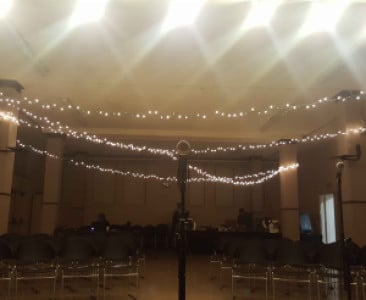Christian Art book - Art and Soul by Brand and Chapman
Description
Read MoreVocal Characteristics
Language
EnglishVoice Age
Middle Aged (35-54)Accents
North American (General) North American (US General American - GenAM)Transcript
Note: Transcripts are generated using speech recognition software and may contain errors.
there are many biblical passages relevant to art, which we have not yet discussed. But in working through the most central plot of the Bible's grand story creation, fall and redemption, we have put in place the beginnings of a worldview through the spectacles we can begin to view and perhaps question too many assumptions that are tossed in our direction. Questioning assumptions is, of course, very much the spirit of the postmodern age, But it is also the spirit of Christ. One of the reasons both the Jewish and Roman establishment found Jesus so threatening was that he refused to take for granted many of the givens of his day looking through our biblical spectacles at two of the apparently opposing views we began with the secular worlds, quest for the spiritual through art and the Christian world. Suspicion that art is too worldly to be spiritually brings them into clearer focus. We can begin to see why the first gifts are too high a role, the second too low. Strangely enough, both viewpoints lead us back to the same philosophical blind alley dualism. Dualism is a word that can be applied to any split vision worldview. It separates God's creation into distinct in opposing realms, one representing good, the other representing evil. Holy versus profane, sacred versus secular material versus spiritually. So it is dualism at work in the abstraction of Kandinsky, Mondrian and Brancusi, believing that to get through to something pure and spiritual, one must strip away all objective representation. It is dualism we see throughout church history, banning organs, dancing bonnet ribbons or the cinema as being too worldly. It is dualism we here in the church that suddenly suggests being a full time Christian worker is more worthy than being a reporter in the art college. That implies fine art is higher than graphics. However, a truly biblical worldview will not let us get away with such simplistic divides. The Bible frequently speaks in paradox, explain truths not in terms of either or but both, and creation is both gloriously beautiful End tainted by sin. Humanity is both made in God's image, and fallen Jesus is both fully human and fully divine. Christians are both were deemed from the curse of sin and still suffering its consequences. This does not mean that God contradicts himself. Rather, these air literary paradoxes inviting us to dig deeper. If we do so, we will discover that these apparent contradictions are in fact all part of a coherent picture of God at work in the world.
